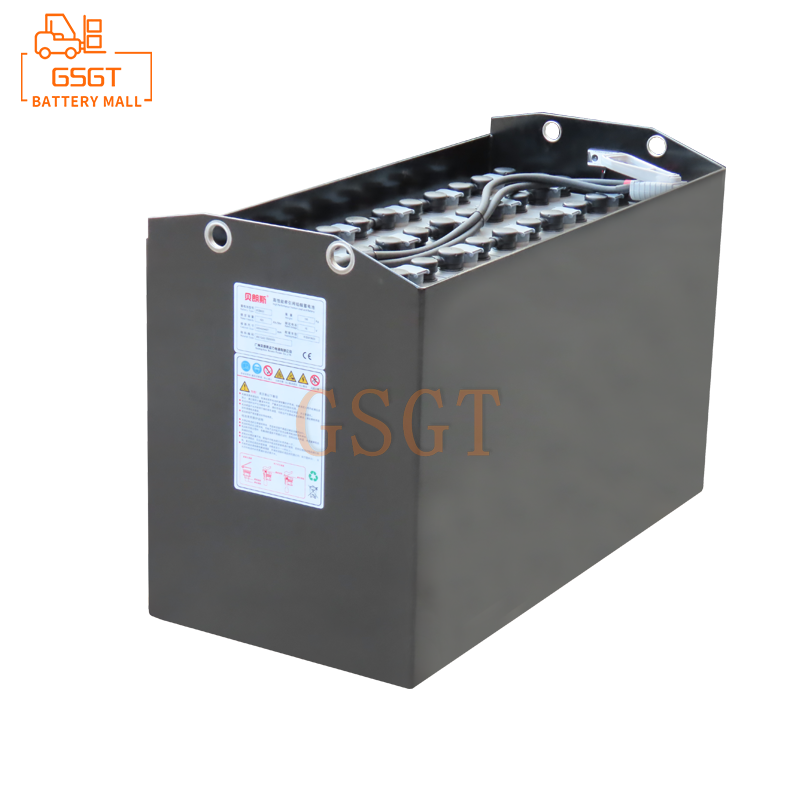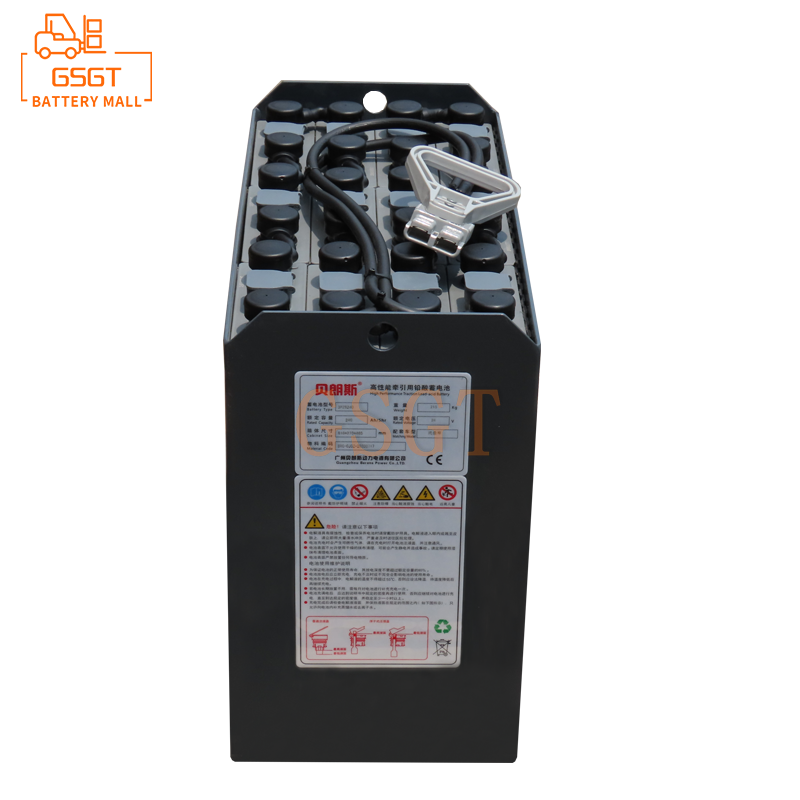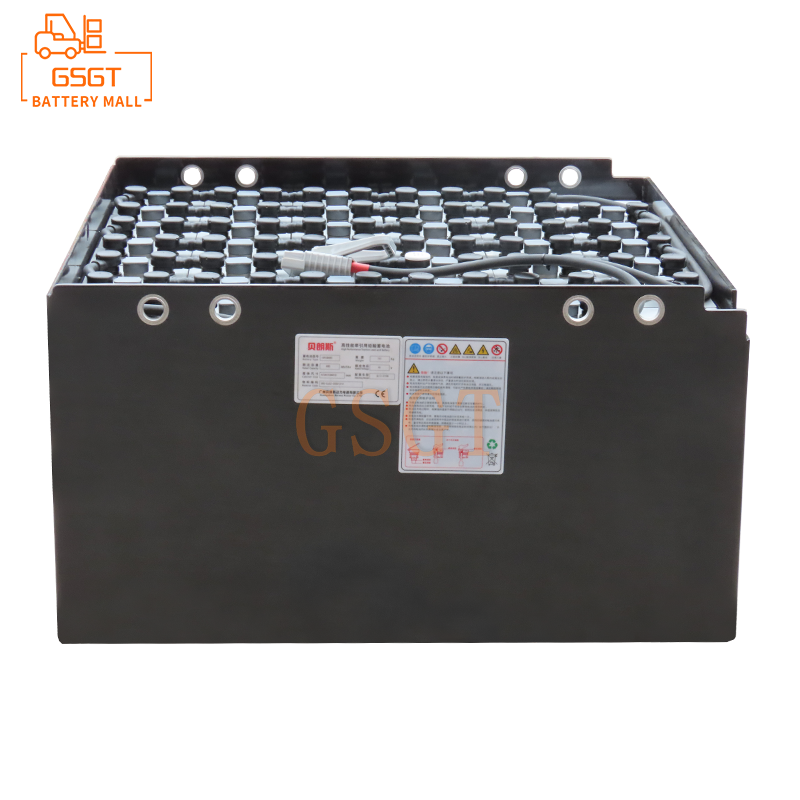Time:2025-05-26 11:11:32
Browse:604
In modern logistics and industrial production, forklifts, as indispensable handling equipment, the performance of their power core - lead-acid batteries - directly determines the working efficiency and operational stability of forklifts. However, lead-acid batteries are not permanently durable. As the usage time increases and the number of charge and discharge cycles accumulates, their performance will gradually decline. Accurately determining whether the lead-acid battery of a forklift needs to be replaced not only affects the normal operation of the forklift but also effectively controls operating costs. This article will deeply explore the methods and key points for determining the timing of replacing lead-acid batteries in forklifts from multiple dimensions, providing practical reference basis for forklift users and maintenance personnel.
1. Intuitive manifestations of battery performance decline
(1) The battery life is significantly shortened
The most obvious performance decline of lead-acid batteries in forklifts is the significant reduction in their driving range. Under normal circumstances, a fully charged forklift should be able to meet the working requirements of one shift or even longer. However, when it is found that the working time of the forklift significantly decreases after being fully charged, for instance, a forklift that could work continuously for 6 to 8 hours can now only operate for 2 to 3 hours, and this situation occurs frequently, it is very likely that problems such as sulfation of the internal plates and shedding of active substances in the battery have led to a decline in battery capacity. At this point, even after multiple attempts at deep charging, the battery life is difficult to return to the normal level, which indicates that the battery is approaching the end of its service life and needs to be considered for replacement.
(2) Abnormally prolonged charging time
The charging time of lead-acid batteries is usually relatively fixed, generally around 8 to 10 hours. If you notice that the charging time of forklift batteries is getting longer and longer, and a battery that used to be fully charged in 8 hours now takes 12 hours or even longer to reach the full charge state, this is an important signal of battery performance decline. This might be due to the reduced efficiency of the chemical reactions inside the battery, the aging of the plates, and the inability to absorb electrical energy quickly. At the same time, during the charging process, if the battery gets extremely hot and its temperature is significantly higher than that during normal charging, it also indicates that there is a problem with the battery. There may be local short circuits or aging of the plates, etc. In such cases, the battery can no longer work normally and should be replaced in a timely manner.
(3) Insufficient starting power
When starting a forklift, a relatively large current is required. If the power of the lead-acid battery is insufficient, it will cause difficulties in starting the forklift, which is manifested as slow motor speed, abnormal sound, and even inability to start. When this situation occurs, the first step is to check whether the battery voltage is normal. If the voltage is within the normal range but the startup is still difficult, it is very likely that the internal resistance of the battery has increased, and it is unable to provide sufficient instantaneous large current. Increased internal resistance is a typical feature of battery aging, indicating that the activity of the chemical substances inside the battery decreases and its electrical conductivity deteriorates. At this point, the battery can no longer meet the normal working requirements of the forklift, and battery replacement is imperative.
2. Inspection of the battery's appearance and physical condition
(1) Shell damage and deformation
It is crucial to regularly inspect the casing of the lead-acid battery in forklifts. The battery casing mainly serves to protect the internal plates and electrolyte. If the casing is damaged, cracked or deformed, it will cause the electrolyte to leak. Once the electrolyte leaks, it will not only corrode other components of the forklift, but also cause an imbalance in the electrolyte concentration inside the battery, affecting the normal chemical reactions of the battery. In addition, a damaged casing may also allow external impurities to enter the battery interior, causing serious problems such as short circuits. Therefore, when obvious damage or deformation is found in the battery casing, even if the battery can still work with difficulty, it should be replaced as soon as possible to avoid greater safety hazards and equipment damage.
(2) Observation of the state of the plates
Opening the liquid filling hole of the battery and observing the state of the plates can also determine whether the battery needs to be replaced. The normal surface of the plates should be flat, smooth and of uniform color. If white or grayish-white patches are found on the surface of the plates, this is a typical phenomenon of plate sulfation. Sulfation of the plates will lead to a reduction in the active substances of the plates, thereby reducing the charging and discharging performance of the battery. In addition, if the plates deform, break or fall off, it is a serious sign of battery aging. These physical damages to the plates cannot be repaired through regular maintenance. Once discovered, the battery must be replaced in a timely manner; otherwise, it will further aggravate the damage to the battery and may even cause dangerous situations such as battery explosion.
(3) The level and color of the electrolyte
The electrolyte inside lead-acid batteries is crucial for the normal operation of the batteries. Regularly check the liquid level of the electrolyte. Under normal circumstances, the electrolyte should submerge the plates by 10 to 15 millimeters. If the electrolyte level is found to be too low and still drops rapidly after replenishing distilled water or special lead-acid battery electrolyte, it may be due to excessive consumption of electrolyte by the internal plates of the battery or there is a leakage. In addition, observing the color of the electrolyte can also help identify problems. The normal electrolyte should be colorless or light yellow. If the electrolyte becomes cloudy or black, it indicates that the chemical reactions inside the battery are abnormal, and the plates may have severely aged or been damaged. At this point, the battery's performance has significantly declined and it needs to be replaced in a timely manner.
3. Professional Testing and Data Analysis
(1) Voltage detection
Using a professional multimeter to test the voltage of forklift lead-acid batteries is a common method for judging battery performance. After the battery is fully charged and left to stand for a period of time, measure the terminal voltage of the battery. In addition, during the operation of the forklift, the changes in battery voltage are monitored in real time. If the voltage drops too rapidly during operation, it indicates that the battery cannot stably provide sufficient power and can no longer meet the normal working requirements of the forklift. Replacement should be considered.
(2) Internal resistance detection
The internal resistance of a battery is an important indicator for evaluating its performance. The magnitude of the internal resistance directly affects the charging and discharging efficiency and output power of the battery. The internal resistance of a battery can be accurately measured by using a professional battery internal resistance tester. Generally speaking, the internal resistance of new lead-acid batteries is relatively small. As the usage time increases, the internal resistance will gradually increase. When the internal resistance of the battery increases to a certain extent. The normal internal resistance range of batteries of different models and capacities varies. You can refer to the technical parameters provided by the battery manufacturer for comparison and judgment. Once the internal resistance of the battery exceeds the normal range, it means that the chemical structure inside the battery has undergone irreversible changes. Replacing the battery is a necessary measure to ensure the normal operation of the forklift.
(3) Analysis of charge and discharge curves
Conducting charge and discharge tests on forklift lead-acid batteries through professional charge and discharge equipment and drawing charge and discharge curves is one of the most accurate methods to judge battery performance. During the charging process, observe the changes in battery voltage, current and temperature; During the discharge process, record the battery's discharge time, voltage drop rate and other data. The normal battery charge and discharge curve should be smooth and stable, and the changes in voltage and current should follow certain rules. If the charge and discharge curves show abnormal fluctuations, such as the voltage rising too fast or too slow during charging, or the voltage dropping suddenly accelerating during discharging, it indicates that there is a problem inside the battery. Through a detailed analysis of the charge and discharge curves, the degree of capacity attenuation of the battery, the performance of the plates, and whether there are faults such as short circuits can be accurately determined, thereby providing a scientific basis for whether to replace the battery.
4. Judgment Based on Comprehensive service life and maintenance records
(1) Refer to the battery's service life
Lead-acid batteries all have a certain service life, generally around 2 to 5 years. If the lead-acid battery of a forklift has been in use for more than three years, even if it can still work normally at present, it is approaching the limit of its service life. As the years of use increase, various materials inside the battery will gradually age, its performance will inevitably decline, and the probability of failure will also increase significantly. Therefore, for batteries that have been in use for a long time, even if there is no obvious performance decline, preparations for replacement should be made in advance to avoid sudden battery failures affecting normal production operations.
(2) Analyze and maintain the records
Detailed battery maintenance records also have important reference value for determining whether the battery needs to be replaced. Record information such as the charging time, charging frequency, electrolyte replenishment status of each battery, and any faults that have occurred. If you find that the battery has frequently experienced abnormal charging and rapid electrolyte consumption in recent times, and the problems remain unsolved after multiple maintenance sessions, it indicates that the battery has aged to a relatively serious extent and it is difficult to restore its performance through regular maintenance. Through a comprehensive analysis of maintenance records, a more comprehensive understanding of the battery's health status can be achieved, enabling timely decisions to replace the battery and ensuring the normal operation and production efficiency of the forklift.
5. Precautions for Battery Replacement
When determining through the above multiple methods that the lead-acid battery of a forklift needs to be replaced, the following points should also be noted during the replacement process:
Select the appropriate battery: Choose the matching battery model and capacity based on the forklift's model, power and working requirements. At the same time, it is necessary to choose a brand with reliable quality and good reputation to ensure the performance and service life of the new battery.
Safe operation: Lead-acid batteries contain corrosive substances such as sulfuric acid. When replacing the battery, wear protective equipment such as gloves and goggles to prevent the electrolyte from splashing onto the skin or eyes. During the operation, be careful and cautious to prevent the battery from falling and getting damaged or injuring people.
Correct installation: In accordance with the forklift's user manual and the installation requirements of the battery, correctly connect the positive and negative terminals of the battery to ensure a firm connection. This is to prevent the battery from failing to work properly or generating sparks and causing danger due to poor contact.
Old battery disposal: The old lead-acid batteries that have been replaced are classified as hazardous waste and should not be discarded at will. They should be handed over to professional recycling institutions for processing to protect the environment and avoid resource waste.
To accurately determine whether the lead-acid battery of a forklift needs to be replaced, multiple aspects such as the battery's performance, appearance condition, professional test data, service life and maintenance records need to be comprehensively considered. Through scientific judgment methods and timely replacement measures, the working efficiency of forklifts can be effectively improved, operating costs can be reduced, and the safety and stability of production operations can be ensured. In daily use, it is necessary to strengthen the maintenance and monitoring of lead-acid batteries in forklifts, so as to detect and solve problems early and ensure that forklifts are always in good operating condition.

$2450

$850

$5710

$5710

MESSAGE
Professional And Efficient
Security
Affordable Price
Professional Services